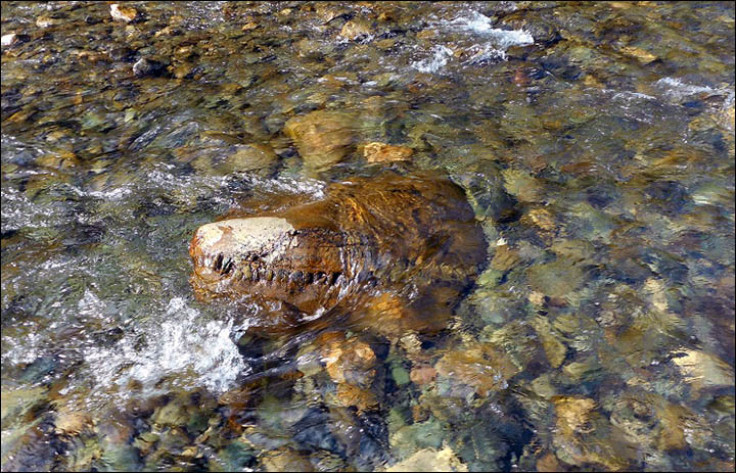Siberia: 150-Million-Year-Old 'Jurassic Crocodile' Discovered - But is it Fake?

Fishermen in Siberia's Yamal Peninsula have come across what some scientists believe may be the remains of a 150 million-year-old crocodile, although others have said the fossil is too well-preserved to be real.
Members of the Wild North Fishing Club claimed to have found the fossil as they rafted along the Ruta-Ru River. Their boat struck a large object and upon closer inspection, they discovered what appeared to be a large, intact skull.
The club's chairman Yevgeny Svitov told the Siberian Times: "The boat of our member Oleg Yushkov bumped against something. It was not very deep there and he could see a stone that looked like the head of a prehistoric animal. He took a photograph and showed it to us."
According to the newspaper, Siberian zoologists are on their way to the site to extract the apparent fossil before it is covered by ice and washed away in the spring floods next year.
Yushkov emailed the photographs to the Zoological Museum of the Institute of Plant and Animal Ecology in the city of Yekaterinburg, Russia. Scientists there have stated the creature is the fossil of a mesosaur, a group of small aquatic reptiles that lived during the early Permian period.
Pavel Kosintsev, head of the museum, said: "I was very surprised to receive these pictures which perhaps shows a dinosaur skull. I cannot yet say, is this really an ancient reptile. It is necessary to carefully examine the object."
Svitov added: "We were at first sceptical about his find, saying there could not be any mesosaurs in Yamal. Research has to be carried out to establish the exact age of the remnants."
Mesosaurs - otherwise known as "middle lizards" - lived on Earth roughly 299 to 270 million years ago, long before the estimated 150 million years of the fossil.
Others have suggested the skull could have belonged to a creature called Dakosaurus-maximus, a prehistoric carnivore within the family Metriorhynchidae that lived during the Late Jurassic and Early Cretaceous eras.
However, Dr Mark Evans, curator of Natural Sciences at Leicester Arts and Museums Service, has dismissed such claims.
"It's strange that it's so much larger than the surrounding cobbles, which would suggest that it hasn't been transported by the river.
"If it is in its original position, then it should have been eroded away to a greater extent by the cobbles. It is also hard to judge the size of it. It does look rather as if somebody has planted it there," he told the Leicester Mercury.
Evans added that if the object is indeed a fossil, it appeared to have "too many teeth to be a Dakosaurus skull" and lacked the "defining characters".
© Copyright IBTimes 2024. All rights reserved.






